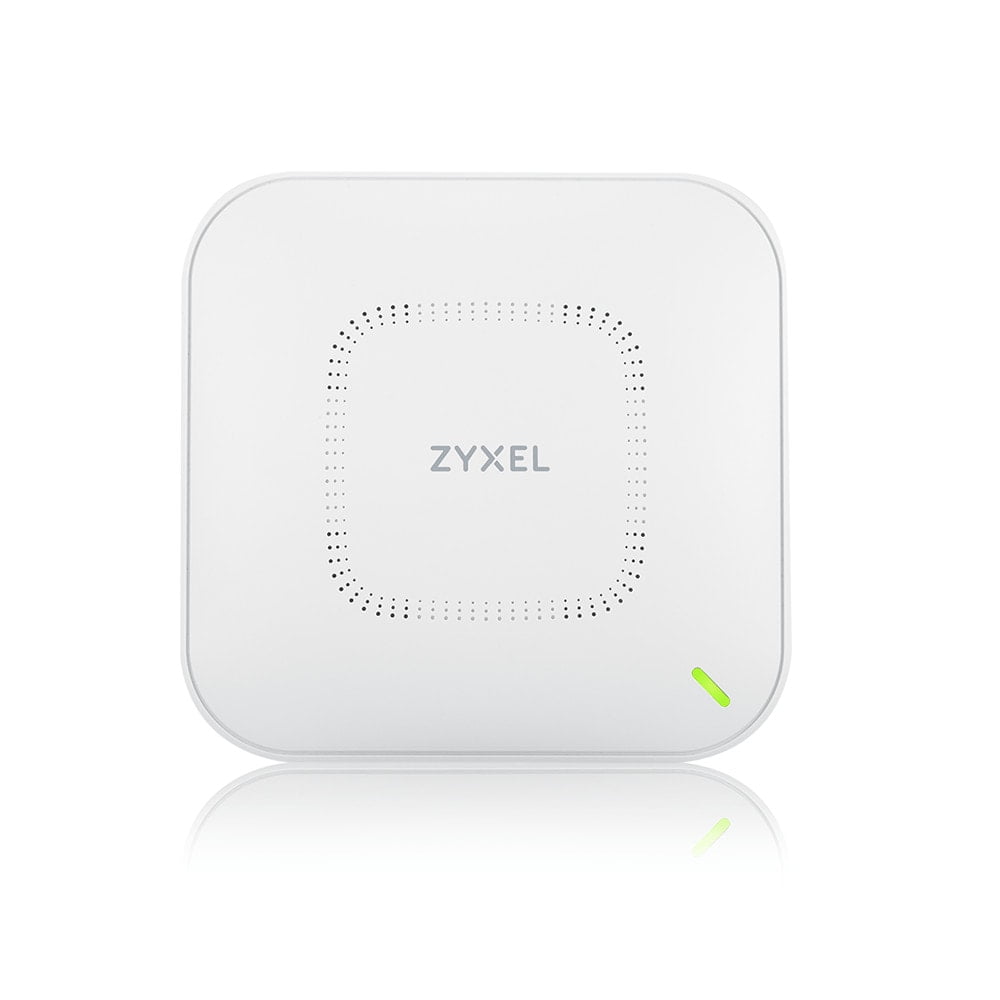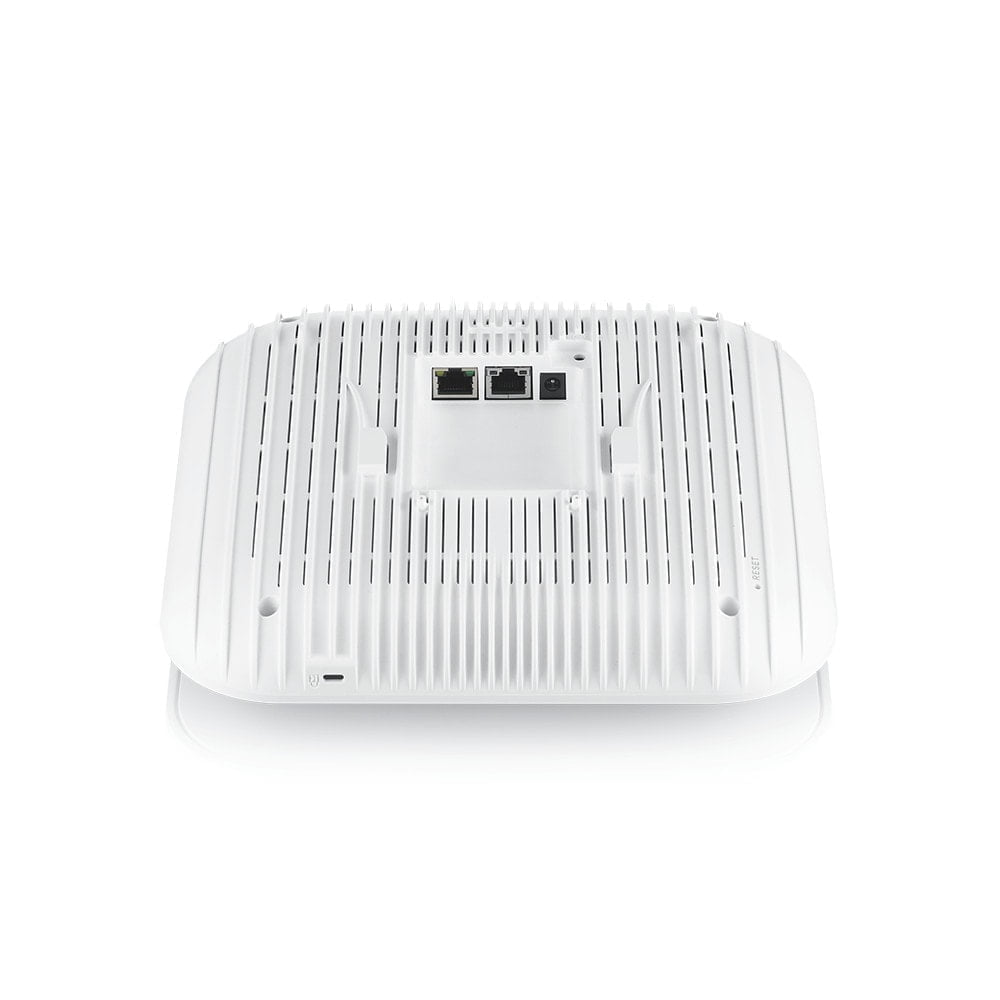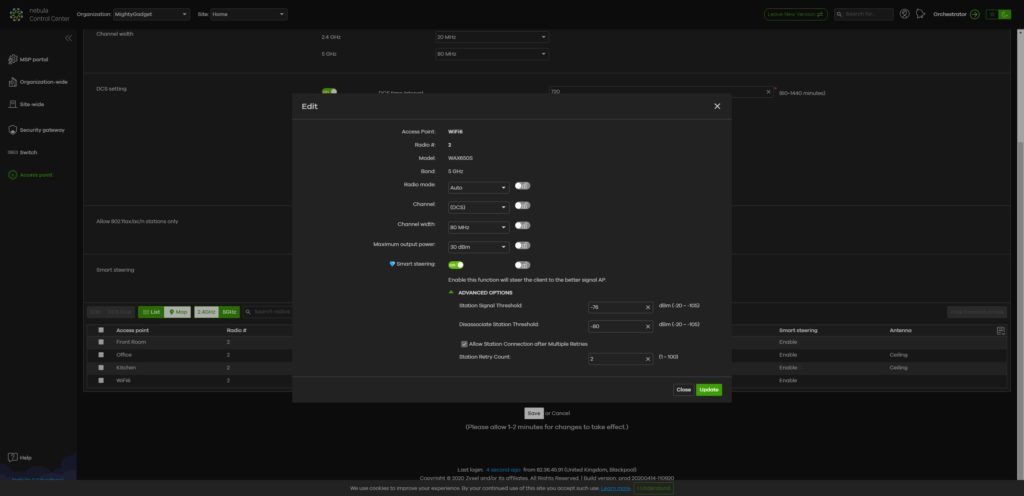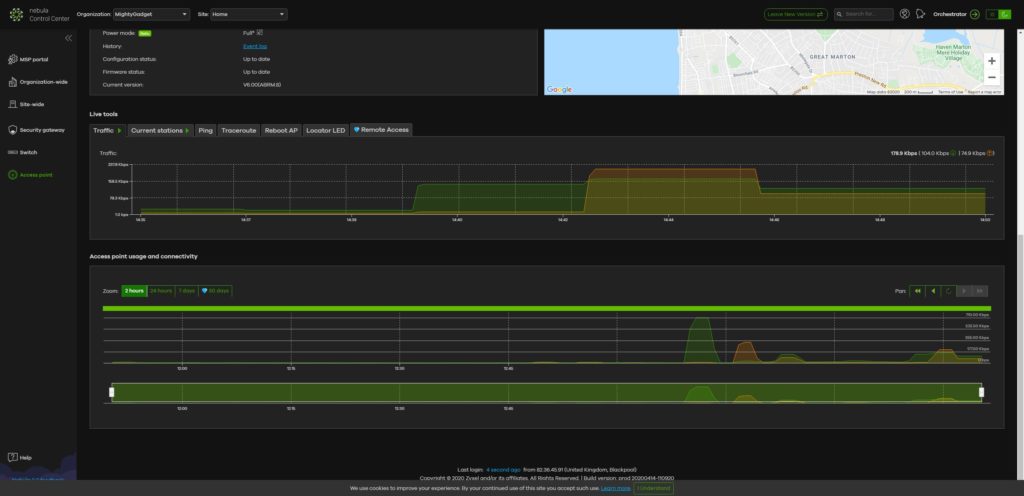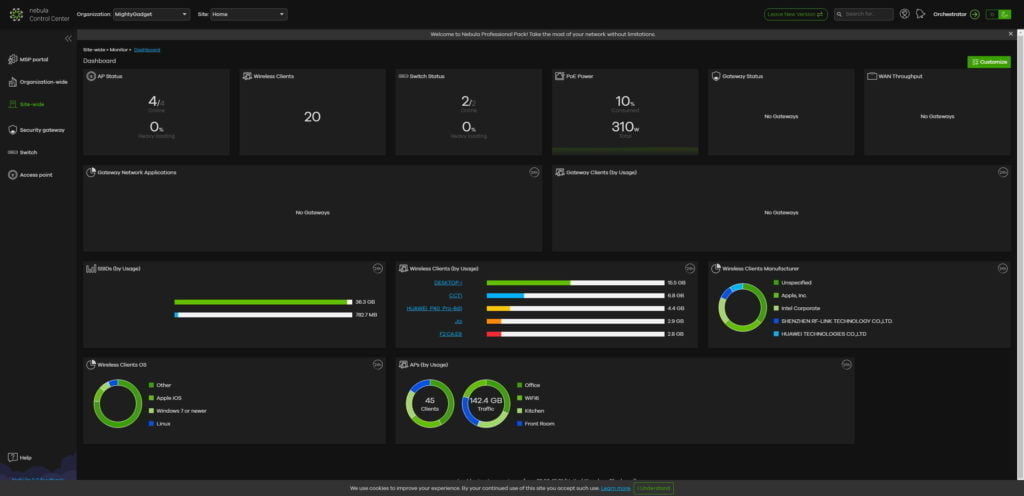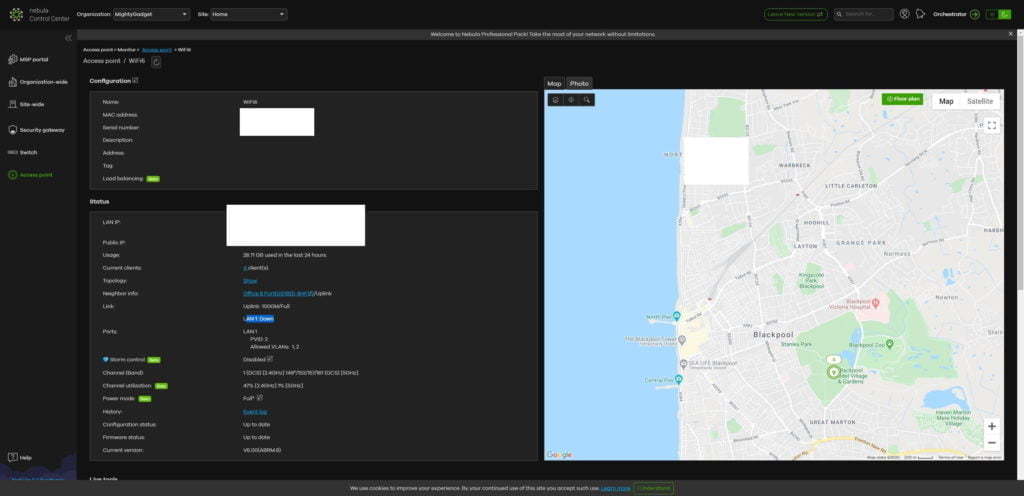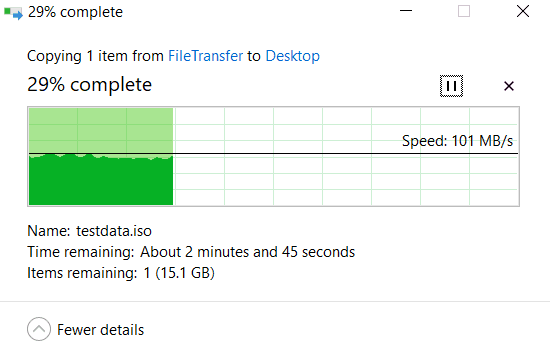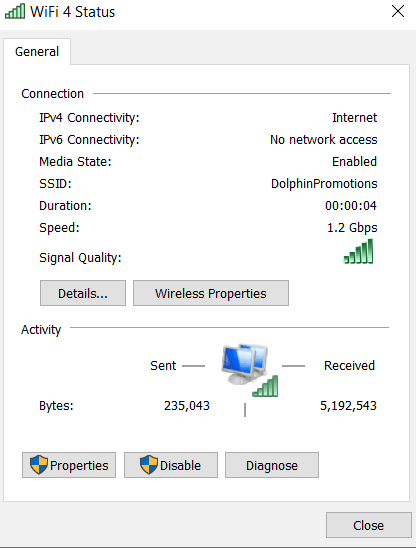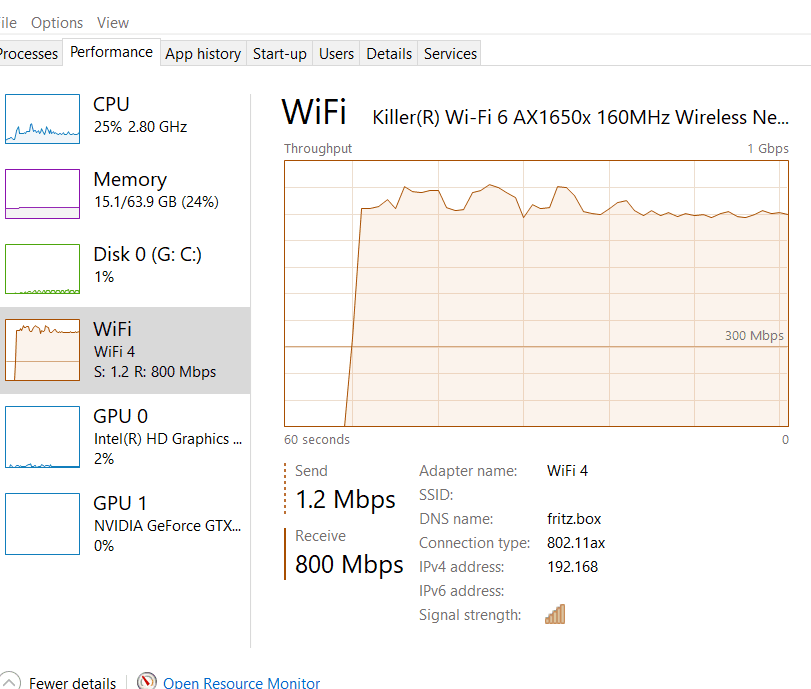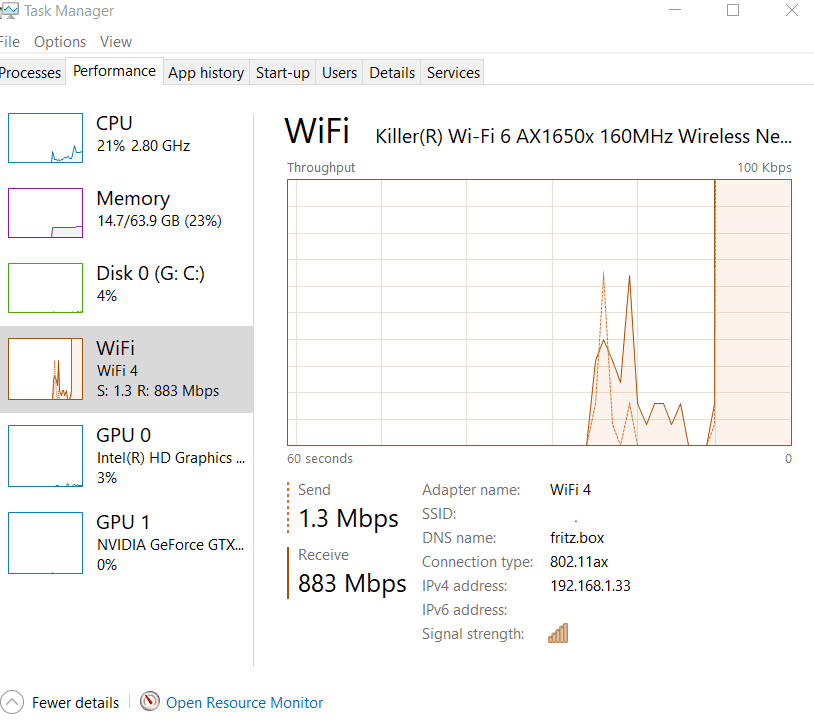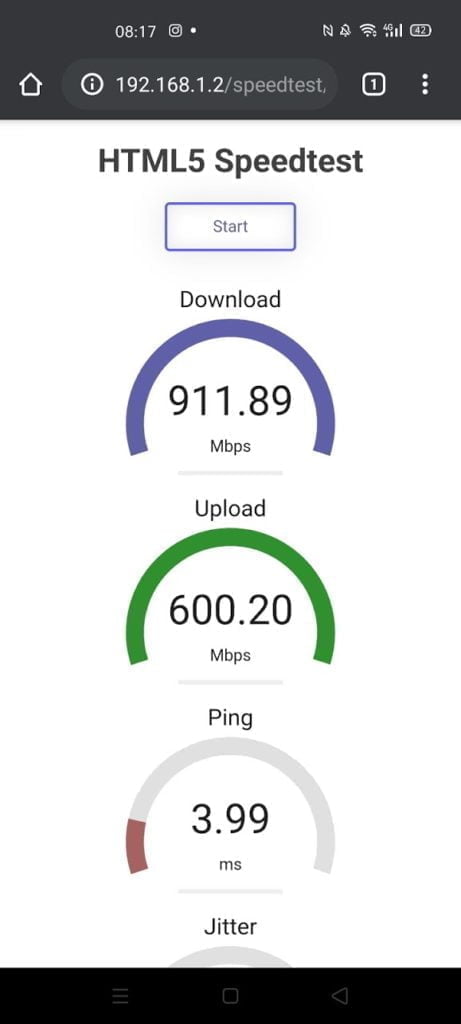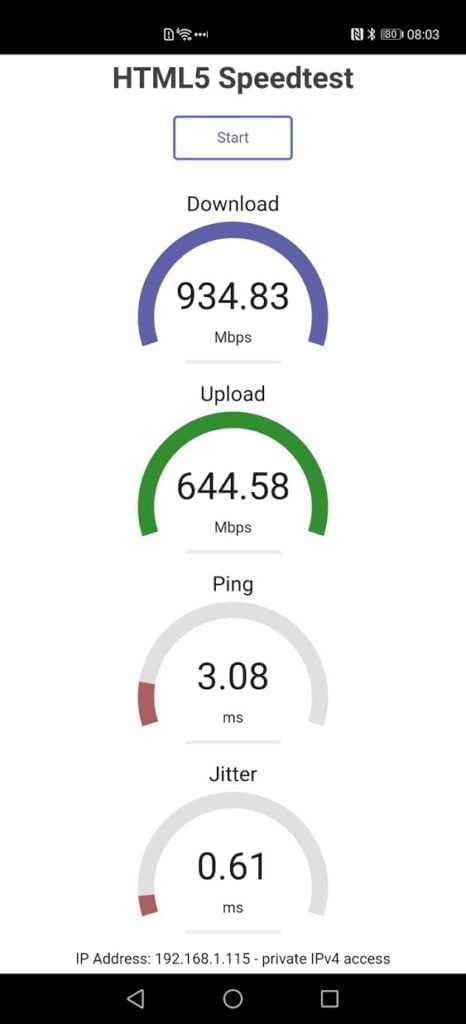I have reviewed quite a few consumer-orientated Wi-Fi 6 devices now, but the commercial side of the market seems to be lagging behind as brands were reluctant to release commercial-grade equipment until the Wi-Fi Alliance finalised the standard.
One of the first products to market also happens to be one of the cheapest, the EnGenius EWS357AP, but there are now options for Meraki, Cisco and most recently Zyxel.
The Zyxel WAX650S is similar to other recent Zyxel hardware I have reviewed, it will work in multiple modes, either stand-alone, via an on-premises controller, or via the Nebular cloud control system.
They have three models coming to market with the WAX650S I am reviewing today, sitting at the top of the pack with a dual-radio (dual 4×4 MIMO) and a maximum data rate of 3550Mbps.
It is not cheap at around £600, but it is comparable to the Cisco offerings and considerably cheaper than Meraki.
Zyxel WAX650S vs WAX510D vs NWA110AX Wi-Fi 6 Access Points
| WAX650S | WAX510D | NWA110AX | |
|---|---|---|---|
| Price | 616.6 | ? | ? |
| Maximum Total Data Rate | 3550Mbps | 1775Mbps | 1775Mbps |
| Radios | 2 | 2 | 2 |
| 5Ghz | 2400 Mbps | 1200 Mbps | 1200 Mbps |
| 2.4Ghz | 1150 Mbps | 575 Mbps | 575 Mbps |
| Bandwidth | 20, 40,80,160-MHz | 20, 40,80 | 20, 40,80 |
| Antenna type | 4×4 Smart Antenna | 2×2 | 2×2 |
| Antenna gain | 2.4 GHz Peak Gain 3 dBi 5 GHz Peak Gain 5.8 dB |
2.4 GHz: Peak gain 5 dBi 5 GHz: Peak gain 6 dBi |
2.4GHz: Peak Gain 5dBi 5GHz: Peak Gain 6dBi |
| Typical transmit output power (EU) | 19/26 dBm | 20/25 dBm | 20/22dBm |
| Ethernet | 1 x 1/2.5/5 Gbps Ethernet (PoE port) 1 x 1 Gbps Ethernet |
1 x 1 Gbps Ethernet | 1 x 1 Gbps Ethernet |
| Power | 802.3bt PoE (Maximum power draw: 31 W) 12 V DC input |
PoE (802.3)at: power draw 17 W DC input: 12 VDC 1.5 A |
PoE (802.3)at: power draw 17 W DC input : 12 VDC 1.5A |
| Cloud Licence | 1-year included | Not included | Not included |
The Zyxel WAX650S comfortably stands out as the highest spec AP. In reality, I am not 100% sure if you would be able to make the most of its speeds. If you run multiple access points, I am not sure how easy it would be to achieve 2400 Mbps on the 160Mhz wide channel. I wasn’t able to use it at all on this, and on consumer gear, it can be a nightmare to get working.
Zyxel WAX650S Features
- Comes with a one (1) year Zyxel Nebula Control Centre licence
- Dual-radio (dual 4×4 MIMO) 802.11ax AP provides a maximum data rate of 3550 Mbps.
- OFDMA delivers the highest performance and low latency for all scenarios.
- Smart antenna is the proven technology that can mitigate interference and boost Wi-Fi 6 performance
- Advanced Cellular Coexistence minimises interferences from 4G/5G cellular networks.
- Basic Service Set (BSS) Coloring allows multiple access points to be used in the same vicinity without fear of co-channel interference.
- Target Wake Time (TWT) enables the device to schedule when to wake up and send or receive data.
- Zyxel smart antenna technology has elevated the effectiveness of spatial reuse even further by physically changing the antenna pattern to avoid interference.
- Future support of Mesh Wi-FI (I think this may already be working)
- 2 Ethernet ports, one with 5Gbps
Set-Up
If you have deep pockets and are tempted to buy this for use in the home, be aware, it is physically very large and would look quite ugly on your ceiling. Also, be mindful that this can draw up to 31W, the cheapest Nebula switch, GS1920v2 offers 30-watt (802.2at) PoE+ to each port.
As I already use the Zyxel Nebula system, this is where I set up the AP, and if you are spending £600+ on a cloud-managed AP, I would imagine this is the most common way to do it.
If you don’t have a Nebula account, you will need to set up your organisation and default settings. It is quite straightforward, and I went through things in more detail in my other reviews.
With my recent review samples, I have used the app to add devices to the system. All you need to do is login into your organisation, hit the plus button and scan the QR code. It is all done in a matter of minutes. The QR scan window and QR code are tiny, but if you hold the phone quite far back, the camera will still pick up the code easily.
It takes a while for the system to fully configure itself, so I always just go off and do something else while it does its thing.
It will adopt the Wi-Fi settings you have already assigned to the rest of the system, so there is almost no other configuring that needs to be done.
The access point specification states it can use the 160-Mhz channel, but under the specific AP settings I am only able to select up to 80Mhz, I suspect this is due to me using three other Aps that only go up to 80Mhz.
Within each AP of the system, you can configure specific settings, you don’t need to, but you may find it improves performance a little.
Performance
As I was unable even to try and get the 160-Mhz channel my speeds were limited to 1.2Gbps, which from my experience with other Wi-Fi 6 systems is what you will likely end up with most of the time anyway.
With many recent phones launching with Wi-Fi 6, and all my laptops already with Wi-Fi 6, I had quite a few devices I could test this out on.
Laptop – Dell XPS 15 with Killer AX1650
I upgraded my Dell XPS 15 to a Killer AX1650 Wi-Fi module last year, this is based on the Intel Wi-Fi 6 AX200. The connection identifies as 1.2Gbps, and within jperf I was able to achieve over 800Mbps.
When it came to file transfers, for a large ISO I was able to achieve just below the peak speeds of my gigabit ethernet connection with it staying steady at 100MB/s.
Mobile – iPhone 11, P40 Pro, Realme X50 Pro & P30 Pro
The iPhone 11, Huawei P40 Pro and Realme X50 Pro all happily connected at 1.2Gbps and using a simple HTML 5 script on my server they all hit 800Mbps+ typically around 900Mbps.
Switching to the Huawei P30 Pro which is only Wi-Fi 5 this connected at 866Mbps at typically achieved a transfer speed of 600Mbps.
So even with this access point not configured to its maximum specification, I was seeing a 50% improvement in transfer speeds moving from Wi-Fi 5 to Wi-Fi 6. There are a lot more improvements to Wi-Fi 6 than just speed. It is supposed to handle high-density environments better, plus numerous other benefits, but this has all been covered in other posts.
General Performance
Day to day performance subjectively feels the same as the other access points I have within my house. Out of the box with the default settings, they do a good job of retaining a Wi-Fi connection as I move around the home. However, I have tweaked the settings to improve the fast roaming. I have ditched 2.4/5Ghz coexistence as I occasionally find things will connect to 2.4Ghz instead of 5Ghz and I have tweaked the output power and signal thresholds to ensure that I end up connecting to the closest access point for maximum performance.
I had temporarily moved to Engenius, but I found that system struggled with proper roaming compared to the Zyxel system. So I think all access point based systems require a little optimisation for the best performance.
With four access points, I can typically achieve over 300Mbps on my Virgin connection in every room in my house. This includes the garage where I have had to set up a gym during the stay at home orders.
Price and Competition
There are hardly any Wi-Fi 6 access points on the market, and I think the Zycel WAX650S stands out as one of the better options, benefitted by the free to use cloud management system.
Other options include:
- EnGenius EWS377AP for £320+
- Cheaper, with free cloud management option. But not quite as good as Nebula and less overall hardware options
- Meraki MR45 AX3500 for £1000
- Not really competing at that price. Plus you need an expensive licence
- Cisco 9120AXI Catalyst for £650
- Hardware is competitively priced but Cisco DNA licence is expensive
- Ubiquiti UniFi XG Access Point for around £700
- This is a Wi-Fi 5 access point, which doesn’t sound appealing at that price, but it has a 10Gbe port, and it is a 4×4 MU-MIMO quad-radio device vs dual-radio of the Zyxel
Overall
Most of my business-orientated networking reviews tend to focus on the SOHO and small business side of things, a £600+ access point is very unlikely to appeal to them.
Ignoring price, if you are looking for a high-end access point that is future proof and offers incredible performance, then the WAX650S is a sensible choice.
If you are already running Nebula hardware, this is a solid investment, and currently, there is little competing with this like for like from the other cloud networking providers. Meraki is not even worth comparing due to the price, Cisco seems to have an expensive management system, and the best Ubiquiti has is the UniFi XG Access Point which is a Wi-Fi 5 option for over £800.
Price-wise, the EnGenius EWS377AP is better, but I find the Nebula system superior, and you have a much greater range of hardware.
To get the most from the WAX650S, you would also need a multi-gig network which will add to the cost further. Depending on the price, and the likelihood of you getting 160-MHz to work properly, it could be worth considering the WAX510D or NWA110AX over this. There is no word on price or availability of those yet.
![ZyXEL 802.11ax Access Points with built in BLE, 4x4 Antennas and multigig Port [WAX650S]](https://m.media-amazon.com/images/I/31b7m1ArjaL._SL160_.jpg)
